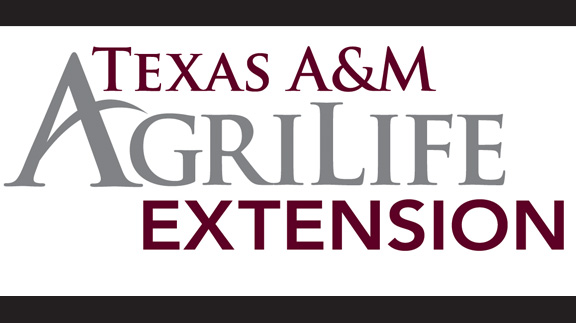Farm & Ranch
North Texas Drones in Agriculture Seminar Set For June 24

FOR IMMEDIATE RELEASE
Tuesday, June 14, 2016
Contact: Fred M. Hall, Tarrant County CEA, Ph: 817.884.1946; email: [email protected]
Is the Future of Agriculture in the Skies?
When precision technology and GPS became common language in agriculture, few folks in the industry thought unmanned
aerial vehicles (UAVs) would be the next logical step for taking technology to the field. “Monitoring crops from
the sky is here now and the science is getting better at it everyday,” says Texas A&M AgriLife Extension Agent Fred M.
Hall in Tarrant County. “If local producers and growers have an interest in developing this technology on there farms,
they should mark their calendar for the North Texas Drones in Agriculture Seminar on June 24”, notes Hall. The program
runs from 10 a.m. to 3:15 p.m. on Friday, June 24 in the Magnolia Room at the Tarrant County Resource Connection
in Fort Worth.
Presenters for the day will include Dr. Alex Thomasson, an agricultural engineer from Texas A&M University, who will
cover the basics of the new technology. He will be followed by UAS Aviation Safety Inspector Al Brunner who will address
what the FAA rules are for today in agriculture. After lunch, several industry represents will review and demonstrate
what their produces can do. Vendors include Bill Thomas from Drone Global Network and Brandon Lee from ArchAerial.
The final item on the agenda will be a round-table discussion where farmers can ask the presenters questions.
The $25 registration will include program materials, refreshments, lunch and two continuing educational units for Texas
Department of Agriculture pesticide applicator license holders. Deadline to register for the meal count is Monday June
20.
Registrations can be made on-line at: http://agrilife.org/urbantarrantag/program-registration or by calling your local Extension
office. In Tarrant County call 817.884.1945.
-30-
Farm & Ranch
Managing Show Cattle Through The Winter

By Heather Welper
Husband and wife duo, Heather and Calvin Welper, are the Co-Owners and Operators or Two C Livestock, located in Valley View, Texas.
The pair’s operation has a show cattle focus where they raise and sell purebred heifers of all breeds and club calf Hereford steers.
When it comes to show cattle, the Welpers know a thing or two including how to prepare for the cold winter months and the Texas major show season run.
To read more, pick up a copy of the November edition of North Texas Farm & Ranch magazine, available digitally and in print. To subscribe by mail, call 940-872-5922.

Farm & Ranch
Double M Ranch & Rescue

By Hannah Claxton, Editor
As the sun rises each day, so do the dozens of mouths that Meghan McGovern is responsible for getting fed. Rather than the sounds of a rooster crowing, McGovern hears the bellows and bleats of a variety of exotic deer, the chortle of kangaroos, the grunts of water buffaloes, and the chirps of a lemur.
Nestled against the banks of the Red River, the Double M Ranch and Rescue, with its high game fences and deer sprinkling the landscape,s its in stark contrast to the surrounding ranches.
“Having deer is kind of like eating potato chips- you can never actually have just one,” said McGovern with a laugh.
McGovern has several herds to take care of- fallow deer, axis deer, water buffalo, goats, and bison. In smaller numbers, there’s also a few kangaroos, a lemur, a potbelly pig, a pair of zebras, a watusi, and a few horses.
To read more, pick up a copy of the November edition of North Texas Farm & Ranch magazine, available digitally and in print. To subscribe by mail, call 940-872-5922.

Farm & Ranch
Acorn Toxicity

By Barry Whitworth, DVM, MPH
With the prolonged drought, most pastures in Oklahoma end up in poor condition. With the lack of available forage, animals may go in search of alternative foods.
If oak trees are in the pastures, acorns may be a favorite meal for some livestock in the fall. This may result in oak poisoning.
Oak leaves, twigs, buds, and acorns may be toxic to some animals when consumed.
To read more, pick up a copy of the November edition of North Texas Farm & Ranch magazine, available digitally and in print. To subscribe by mail, call 940-872-5922.

-

 Country Lifestyles2 years ago
Country Lifestyles2 years agoScott & Stacey Schumacher: A Growth Mindset
-

 Country Lifestyles8 years ago
Country Lifestyles8 years agoStyle Your Profile – What your style cowboy hat says about you and new trends in 2017
-

 HOME8 years ago
HOME8 years agoGrazing North Texas – Wilman Lovegrass
-

 Outdoor10 years ago
Outdoor10 years agoButtercup or Primrose?
-

 Country Lifestyles5 years ago
Country Lifestyles5 years agoAmber Crawford, Breakaway Roper
-

 Equine1 year ago
Equine1 year agoThe Will to Win
-

 Country Lifestyles9 years ago
Country Lifestyles9 years agoJune 2016 Profile – The man behind the mic: Bob Tallman
-

 Country Lifestyles8 years ago
Country Lifestyles8 years agoDecember 2016 Profile, Rusty Riddle – The Riddle Way




